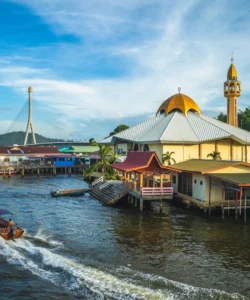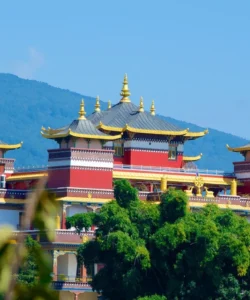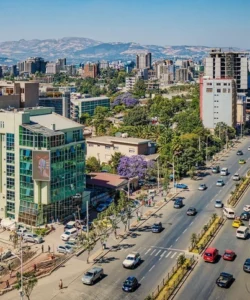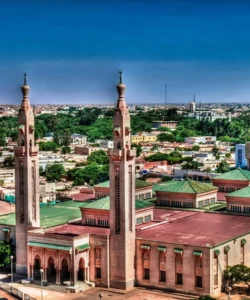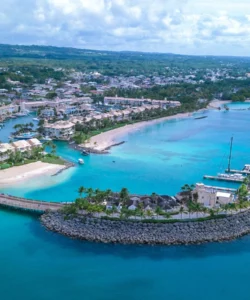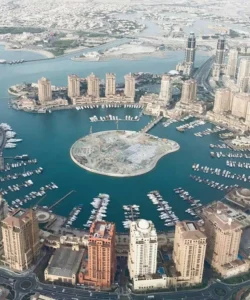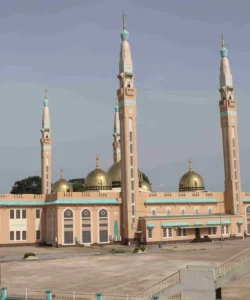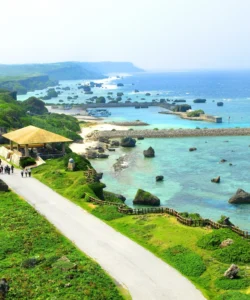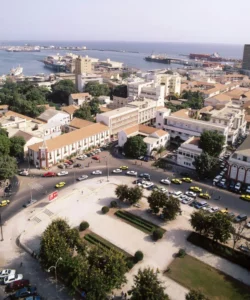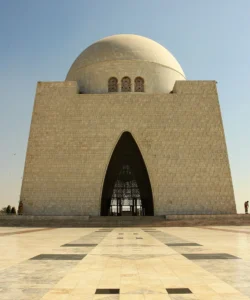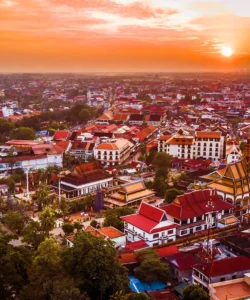Australia is a vast island continent and the sixth-largest country in the world. It’s renowned for its unique wildlife, diverse landscapes ranging from coastal beaches to arid deserts and lush rainforests, vibrant multicultural cities, and a laid-back lifestyle.
Listen to an introduction about Australia
![]()
Here’s a comprehensive overview:
- Area: Approximately 7,692,024 km² (2,969,907 sq mi).
- Population: Estimated at around 26,958,054 people as of 2025.
- Language: English is the national language, though over 300 languages are spoken across the country due to its diverse population.
- Currency: Australian Dollar (AUD).
- Religion: Christianity is the major religion, with Catholicism and Anglicanism being the largest denominations. A significant portion of the population identifies as having no religion.
- Capital: Canberra.
- Major Cities/Towns: Sydney (largest city), Melbourne, Brisbane, Perth, Adelaide, Canberra, Gold Coast, Newcastle, Wollongong.
Attractions & Wonders:
Australia boasts an incredible array of natural and man-made attractions.
- Natural Wonders:
- Great Barrier Reef (Queensland): The world’s largest coral reef system, visible from space, offering unparalleled diving and snorkeling opportunities. A UNESCO World Heritage Site.
- Uluru-Kata Tjuta National Park (Northern Territory): Home to the iconic Uluru (Ayers Rock) and Kata Tjuta (The Olgas), sacred to Indigenous Australians, offering stunning sunrises and sunsets. A UNESCO World Heritage Site.
- Daintree Rainforest (Queensland): The oldest continuously surviving tropical rainforest in the world, teeming with unique flora and fauna, and meeting the reef at Cape Tribulation. A UNESCO World Heritage Site.
- Twelve Apostles (Victoria): Dramatic limestone stacks off the coast of the Great Ocean Road.
- Kakadu National Park (Northern Territory): A vast, biodiverse park with ancient Aboriginal rock art, wetlands, and abundant wildlife. A UNESCO World Heritage Site.
- K’gari (Fraser Island) (Queensland): The world’s largest sand island, with rainforests, freshwater lakes, and dingoes. A UNESCO World Heritage Site.
- Cradle Mountain (Tasmania): A stunning national park with pristine wilderness, iconic dolerite peaks, and diverse hiking trails.
- Man-Made Attractions & City Highlights:
- Sydney Opera House (Sydney, NSW): An architectural masterpiece and a UNESCO World Heritage Site, iconic for its shell-like design.
- Sydney Harbour Bridge (Sydney, NSW): The “Coathanger,” offering bridge climbs for panoramic views.
- Bondi Beach (Sydney, NSW): Australia’s most famous beach, known for surfing and its vibrant beach culture.
- Melbourne’s Laneways & Arcades (Melbourne, VIC): Explore hidden cafes, street art, and boutique shops.
- Federation Square (Melbourne, VIC): A modern public space with cultural institutions.
- Brisbane River (Brisbane, QLD): Enjoy cruises, riverside dining, and South Bank Parklands.
- Kings Park and Botanic Garden (Perth, WA): One of the world’s largest inner-city parks, offering stunning city views.
- Adelaide Oval (Adelaide, SA): A historic sports ground offering roof climbs.
- Parliament House (Canberra, ACT): Australia’s impressive federal parliament building.
- Australian War Memorial (Canberra, ACT): A world-class museum and memorial honoring Australia’s military history.
Architecture:
Australian architecture reflects its diverse history, climate, and cultural influences, from Indigenous structures to colonial, modernist, and contemporary designs.
- Indigenous Architecture: Historically, diverse shelters adapted to climate and materials, such as temporary wurlies, humpies, and more permanent structures in some regions.
- Colonial Architecture: Early buildings (late 18th to mid-19th century) were often simple and functional, using local materials. Later, Victorian-era architecture saw ornate facades, terraces, and grand public buildings in major cities, influenced by British styles.
- Federation Style (late 19th – early 20th century): A distinct Australian style characterized by red brick, white trim, stained glass, and often a focus on the veranda.
- Modernism and Post-War Architecture: Post-WWII, there was a move towards more functional, open-plan homes, embracing the outdoor lifestyle.
- Iconic Structures:
- Sydney Opera House: A prime example of 20th-century expressionist architecture, instantly recognizable worldwide.
- Queen Victoria Building (Sydney): A grand Romanesque Revival building.
- Melbourne Cricket Ground (MCG): A massive, iconic stadium showcasing modern sporting architecture.
- Parliament House (Canberra): A striking blend of modern and classical influences, designed to symbolize democracy and openness.
- Contemporary Architecture: Australian architects are known for innovative and sustainable designs that respond to the unique climate and landscape, often featuring open spaces, natural light, and connections to the outdoors.
Roads:
Australia has an extensive and generally well-maintained road network, especially in urban areas and along major highways connecting the states.
- National Highways: Connect major cities and are typically high quality.
- Regional Roads: Vary in quality, with some unsealed roads, especially in remote outback areas.
- Driving Conditions: Australians drive on the left side of the road. Distances between towns can be vast, especially in the outback, requiring careful planning for fuel and supplies. Road trains (long multi-trailer trucks) are common in rural and outback areas.
- Wildlife Hazards: Be aware of wildlife (kangaroos, emus, etc.) on roads, especially at dawn, dusk, and night, as collisions can be dangerous.
Hotels:
Australia offers a vast range of accommodation, from luxury international hotel chains and boutique hotels in major cities to budget hostels, caravan parks, remote outback lodges, and unique glamping experiences.
- Luxury: The Crown Towers (Melbourne, Sydney, Perth), Park Hyatt (Sydney), Four Seasons (Sydney).
- Mid-Range: Numerous international chains like Novotel, Mercure, Ibis, Hilton, Marriott, etc.
- Boutique: Many unique and stylish hotels in renovated historic buildings or with distinctive designs in cities and regional areas.
- Unique Stays: Glamping tents near Uluru, eco-lodges in the Daintree, farm stays, and island resorts on the Great Barrier Reef.
Restaurants:
Australia’s culinary scene is incredibly diverse and highly regarded, influenced by its multicultural population, fresh produce, and seafood.
- Fine Dining: Cities like Sydney and Melbourne boast world-class restaurants, many with innovative Modern Australian cuisine (e.g., Attica in Melbourne, Quay and Aria in Sydney).
- Café Culture: Australia has a thriving café culture, especially in Melbourne, known for excellent coffee and creative brunch menus.
- Casual Dining: Pubs (offering “pub grub” like parmigianas and steaks), fish and chips shops, Asian eateries (Thai, Vietnamese, Chinese), Italian restaurants, and more.
- “Lolos” (Local Eateries): Not applicable to Australia. This term is specific to the Caribbean (particularly French Saint-Martin) for casual, open-air BBQ shacks. Australia has its equivalent in local takeaways, fish & chip shops, and food trucks.
- Farmers Markets: Excellent for fresh, local produce and gourmet treats.
Cuisine:
Modern Australian cuisine is a fusion of influences, but some iconic foods are strongly associated with the country:
- Meat Pie: An absolute classic, savory minced meat pie, often topped with tomato sauce, a staple at sporting events.
- Vegemite: A dark, salty yeast extract spread, typically eaten on toast. An acquired taste for many non-Australians.
- Lamingtons: Sponge cake coated in chocolate sauce and desiccated coconut.
- Pavlova: A meringue-based dessert with a crisp crust and soft, light inside, typically topped with whipped cream and fresh fruit. (Claimed by both Australia and New Zealand).
- Tim Tams: A popular chocolate biscuit, often enjoyed in a “Tim Tam Slam” (biting off opposite corners, using it as a straw to drink hot beverage, then eating the softened biscuit).
- Sausage Sizzle: Grilled sausages (often beef or pork) in a slice of bread, typically served with onions and sauce. A fundraising staple.
- Fresh Seafood: Abundant and high quality, including prawns (“shrimp, mate!”), barramundi, oysters, and rock lobster.
- Barbecue (BBQ): A quintessential Australian pastime, with friends and family gathering to grill meat, seafood, and vegetables.
- Bush Tucker: Traditional Indigenous Australian food, including native fruits, nuts, seeds, and meats (like kangaroo or emu, though less commonly found in mainstream restaurants).
- Flat White: A popular coffee drink, often credited to Australia (or New Zealand).




































